The RVing “Rule of Twos:”
- About 200 miles per day,
- Arrive by 2:00 (or at least early enough to set up by late afternoon),
- Stay at least two nights.
We’re retired, no need to push for long driving days. So when we plan our travels, one of the tasks is “Where to stop?” When we have a longish drive between two major stops, we have to break up the drive across multiple days. So we look on the map at “around” 200 miles, and see what looks promising.
When you notice the name, “Flaming Gorge,” the decision is pretty much made! We’re really glad that we saw that. And also that we decided on three nights!
Flaming Gorge
Flaming Gorge was named by John Wesley Powell in 1869 during his exploration of the west. The name stuck. When you see the reds of the surrounding cliffs, you can see why. Flaming Gorge is one of five distinct gorges/canyons in this stretch of the Green River. This pic is actually just before Flaming Gorge, in Red Canyon.
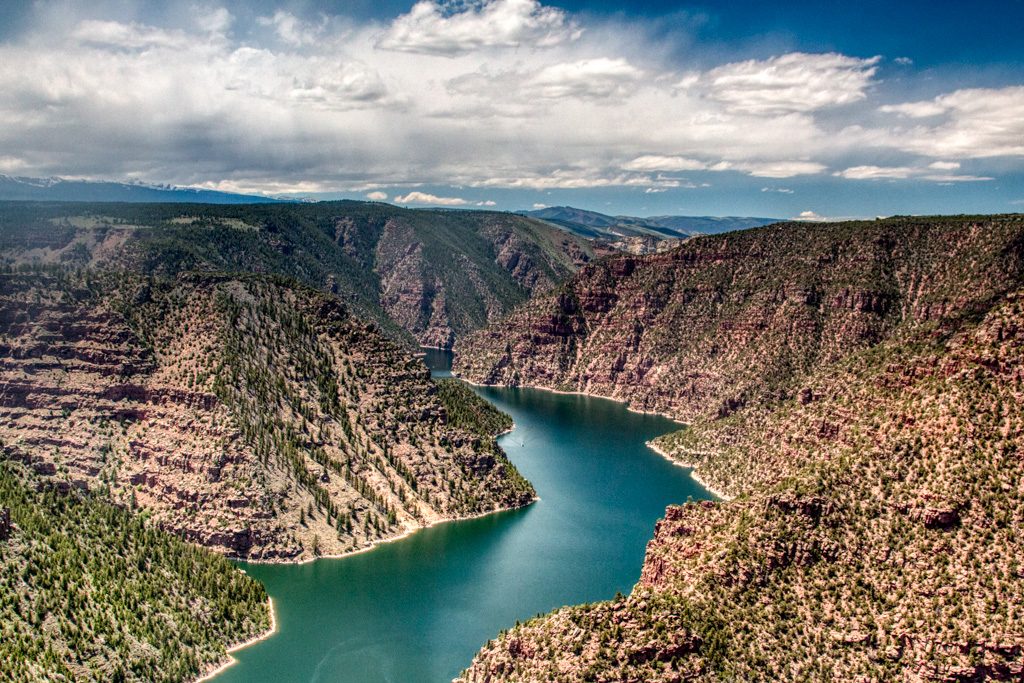
The gorge area is only about 30 miles from our campground, but it is thirty miles of twisting mountain road. I didn’t realize how strong my fear of edges was until I tried to drive on these. Fortunately, Kathe’s shoulder has now healed enough that she was able to resume her driving duties! Phew…
Geology is big here; there are signs along the roadside giving the current rock formation / era, and sayings like, “Dinosaurs roamed here,” or “Ancient seabed, shells and sand dunes.” Because of the erosion over the millennia, we travel backward and forward through the history of the earth as we drive up and down (or actually, down and up) the hillsides.
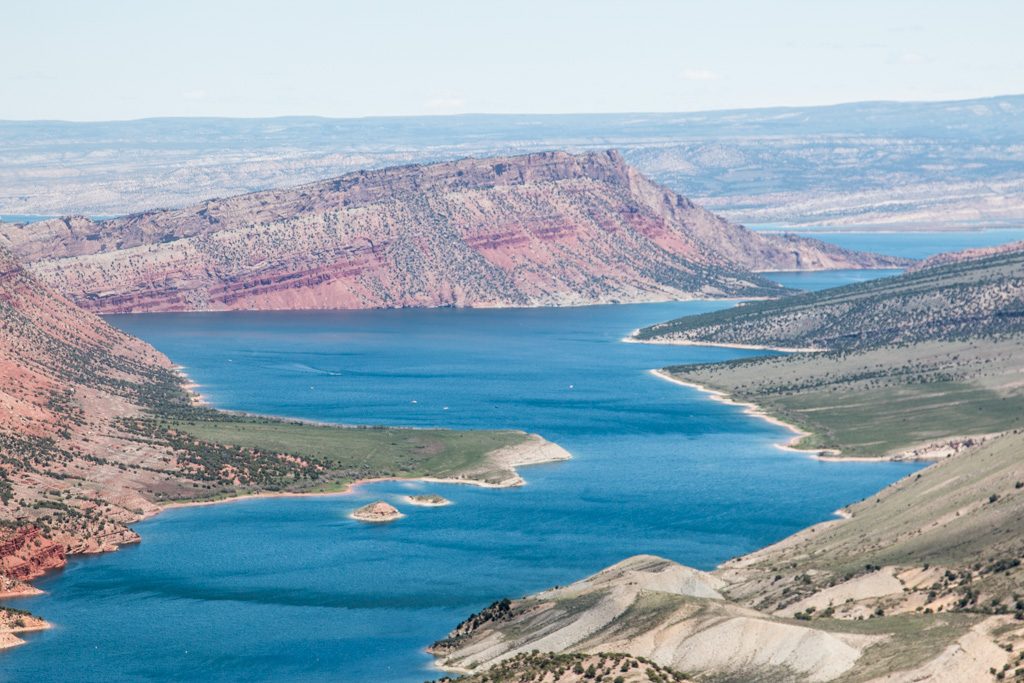
Parts of these gorges have been flooded to create the ninety-one mile long Flaming Gorge Reservoir by damming the Green River, the Colorado’s biggest tributary. We were able to take a tour of the 502′ high Flaming Gorge Dam, going down into the turbine room, and out at the downstream base. Thank goodness for elevators!
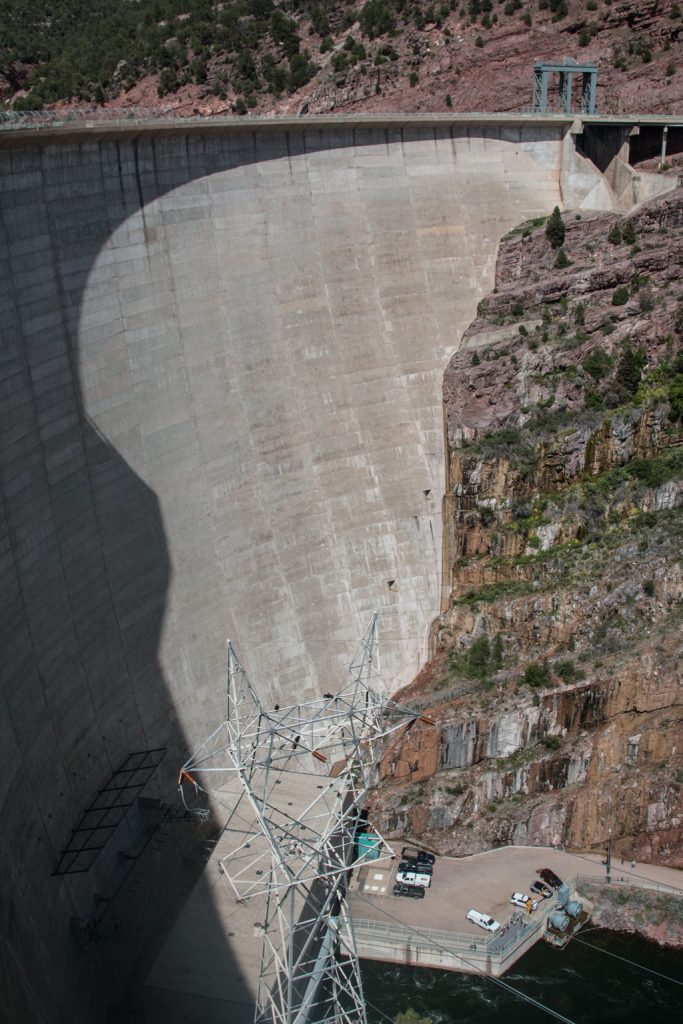
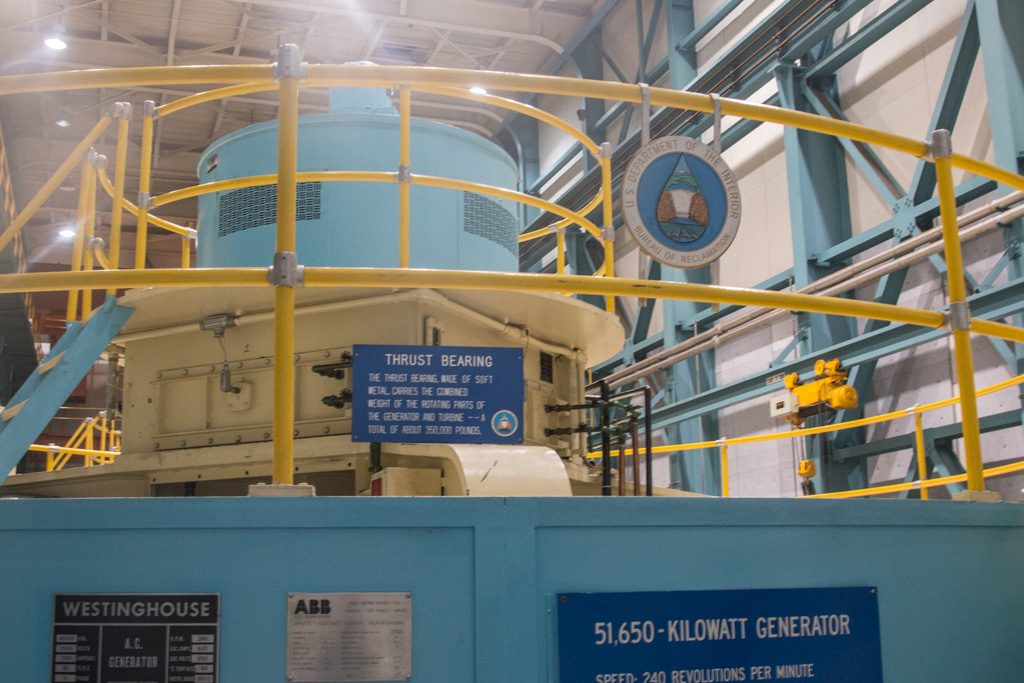
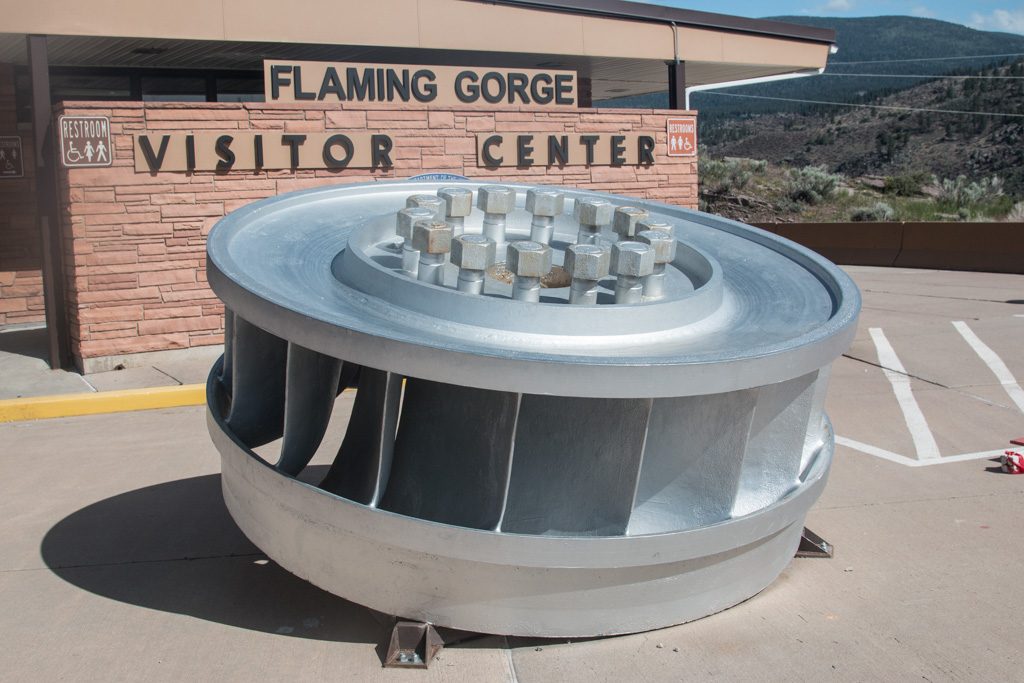
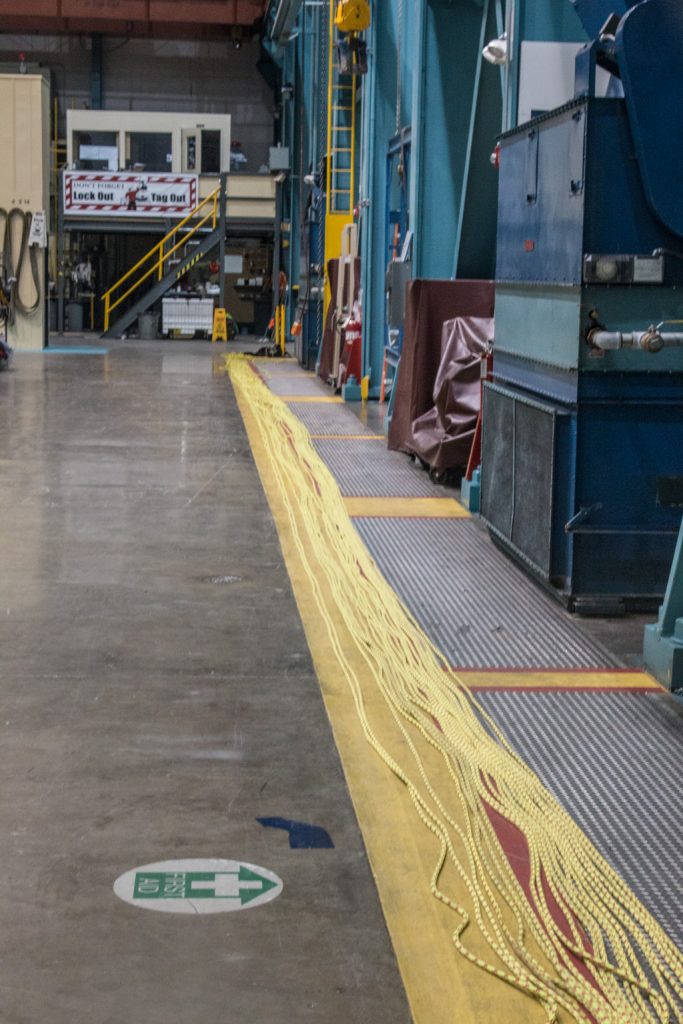
The dam has of course changed the ecology of the river. Some fish previously in the river are gone. But the Green River downstream of the dam is now apparently a world-class trout fishery. There were lots of very large trout swimming in the eddies of the generating plant outlets, but fishing is not allowed in the immediate downstream area.
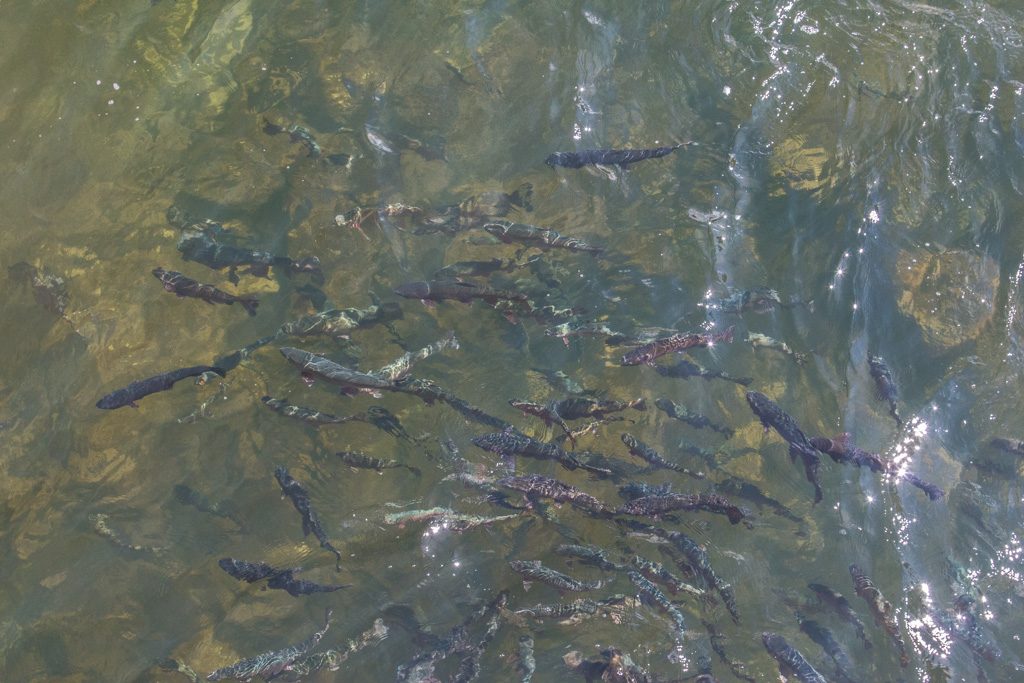
As is frequently the case, the top of the dam is a roadway, usually a two direction road except when something like this is trying to cross!
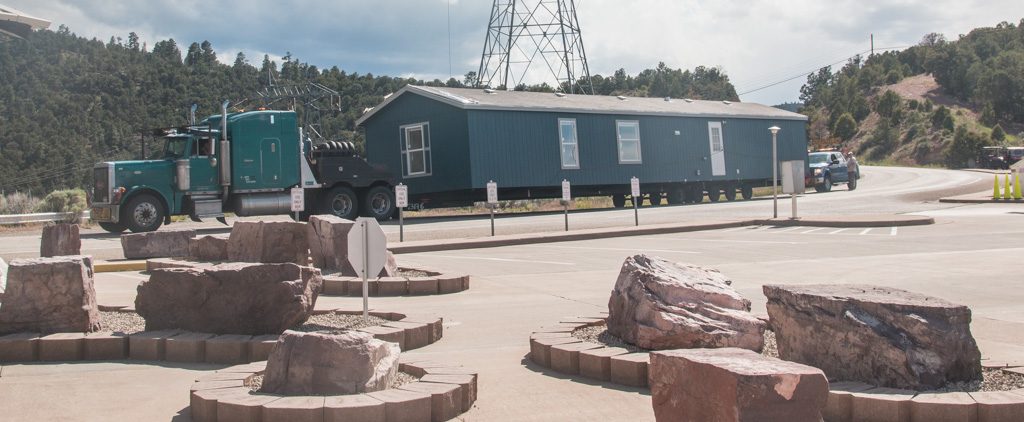
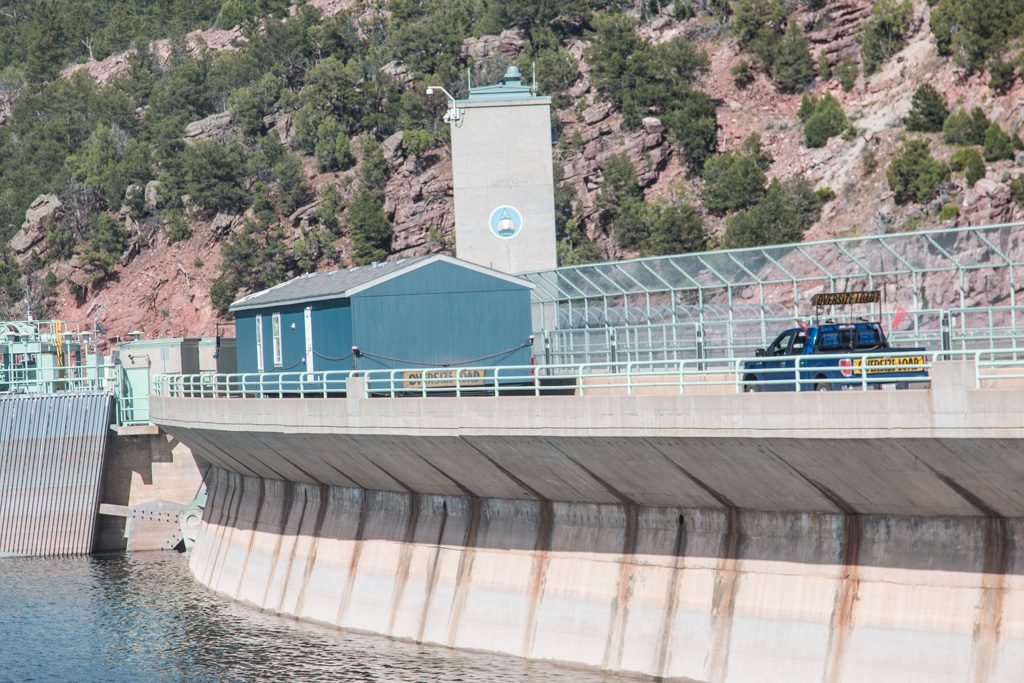
Dinosaur National Monument
About an hour and a half away from our campground (again over the mountains) lay Dinosaur National Monument. What kid (of any age) can resist dinosaurs? Sure! Let’s go.
Dinosaur NM is quite large, but its gem is just inside the western (nearest to us!) entrance. The “Quarry Exhibit Hall” is an enclosed cliff face of what was originally the river bed of an ancient river. Approximately 1,500 bones are visible here, from ten different species of dinosaurs. The site is estimated to have been formed about 149 million years ago. It was discovered in 1909 by Earl Douglass of the Carnegie Museum when he found eight tail vertebrae of an Apatosaurus (how can they tell???). Many of the fossils discovered here were shipped to museums around the world, but many remain.
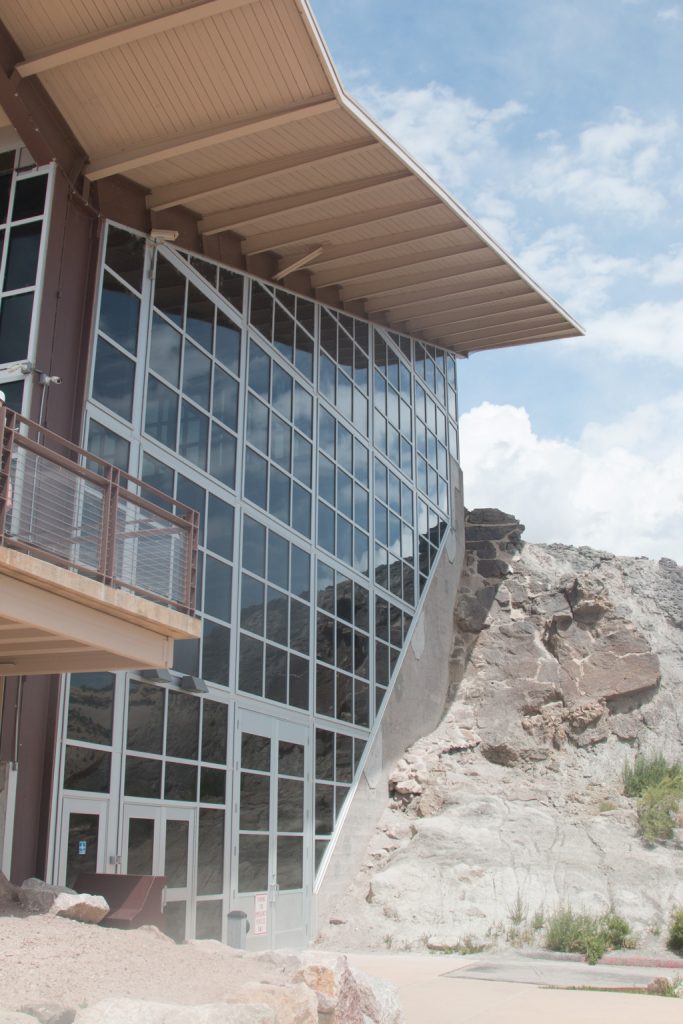
Naturally enough, the cliff face and the fossilized bones are pretty uniform in color. This makes discerning the bones somewhat difficult, especially in pictures.
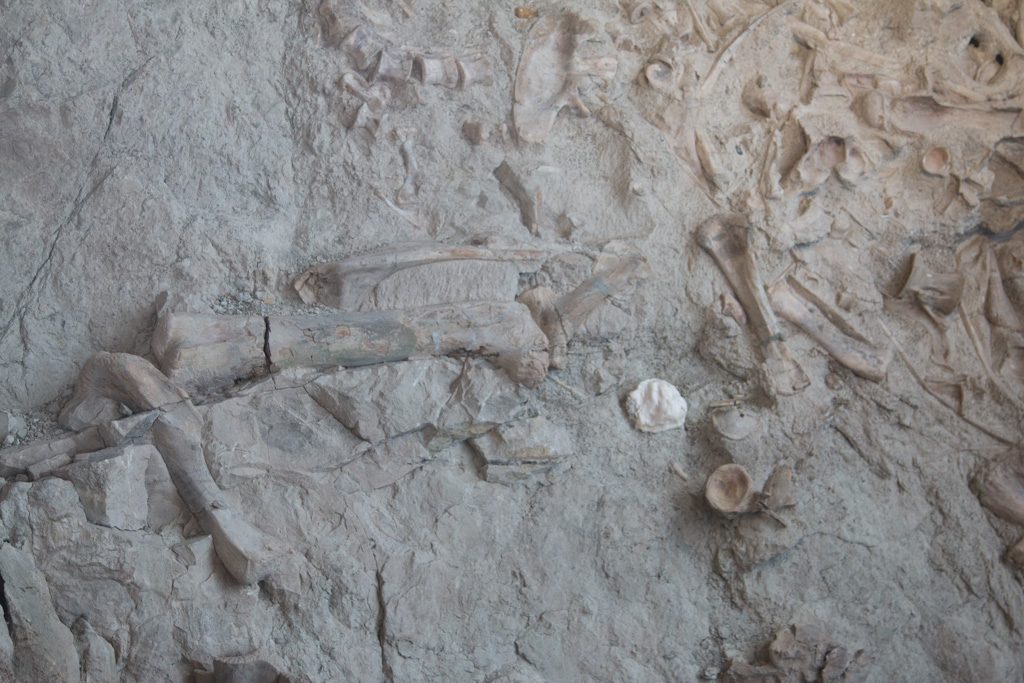
To make it easier to see the bones, I have enhanced the contrast and used edge sharpening in the remainder of these pictures. I should note that the National Park Service does the same thing on its website. (To a greater degree, in my opinion!)
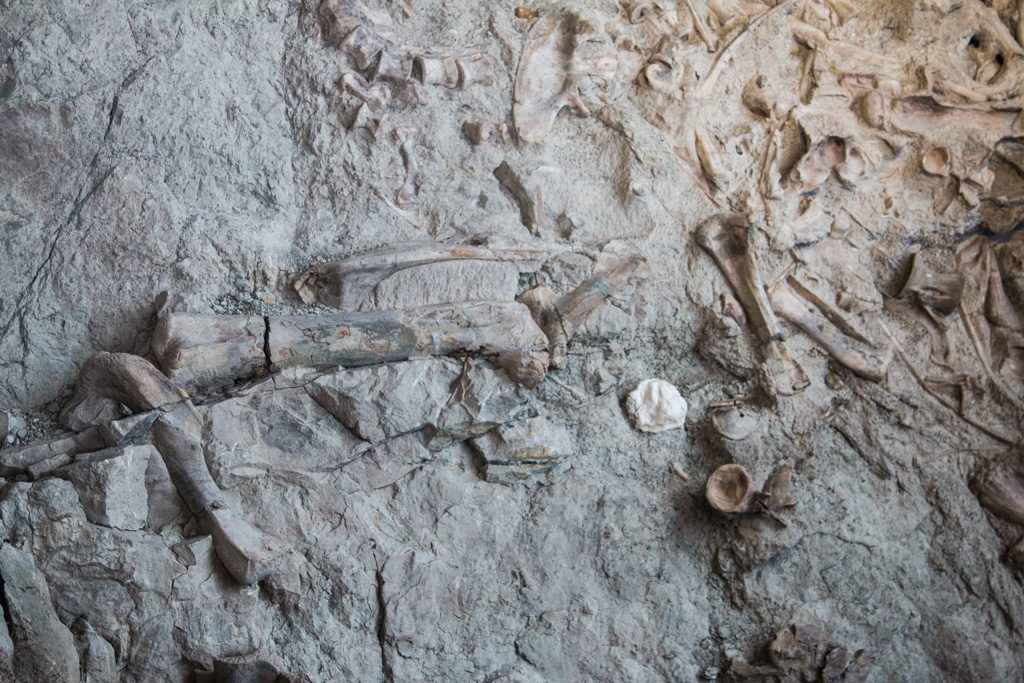
One of the things that makes this site so different is not just the density of preserved bones (which of course are now fossilized, i.e., they are rock, not bone), but also the number of bones that are still articulated—attached to the bones next to them. It is very rare to find skulls still articulated to the cervical vertebrae.
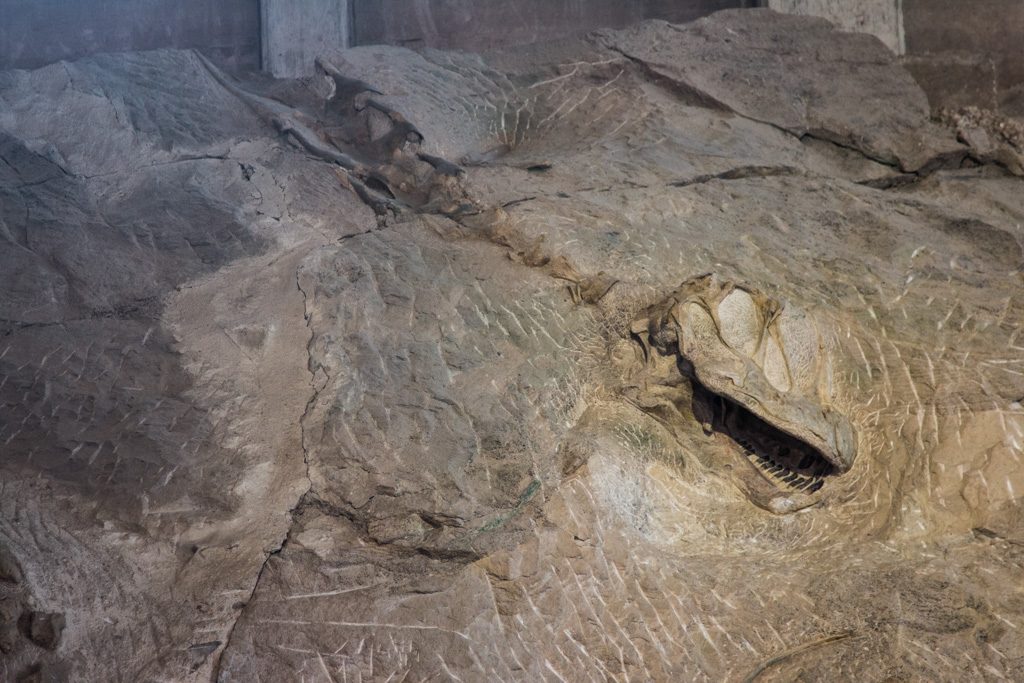
Many species died here. In this picture are large bones from two different species. Across the top is an Apatosaurus scapula. Below it, going from lower left toward the upper right is a Diplodocus scapula. And from lower right toward upper left is an Apatosaurus femur.
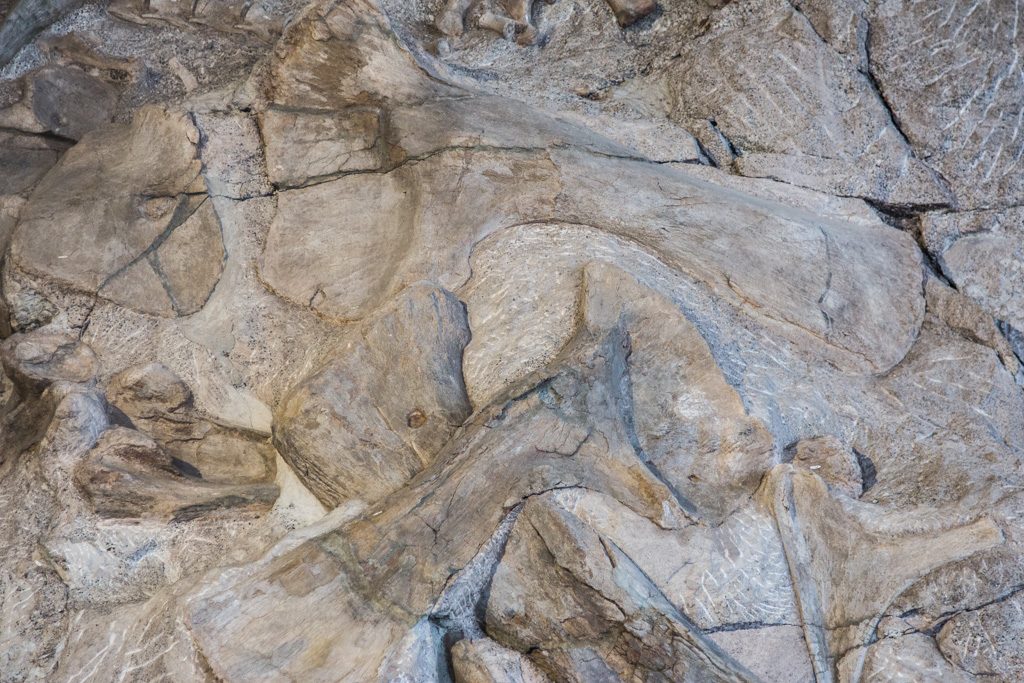
Apparently, mostly complete skeletons are exceedingly rare. The NPS publication describing this part of the wall says, “Articulated Skeleton: Paleontologist’s Dream.” This picture is of a nearly complete Camarasaurus. I couldn’t see all of what they were describing, but then, I’m not a paleontologist!
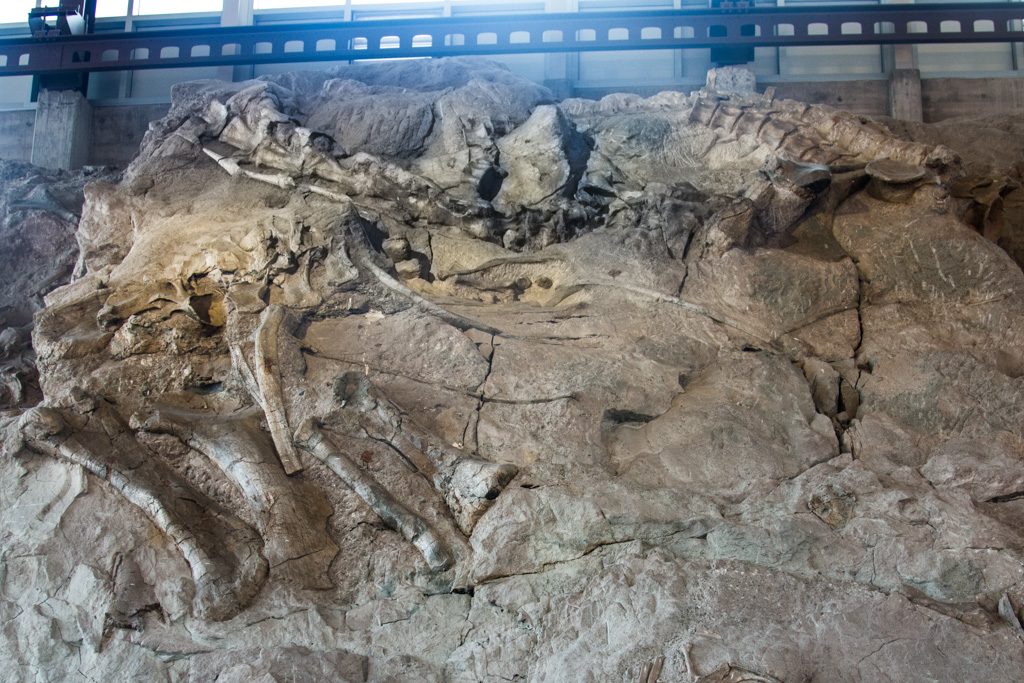
And if I could be permitted a slight aside here, whatever happened to the dinosaur names that I learned as a kid? My grandkids (and this exhibit) and I speak a completely different “language” of dino names! I want my T-Rex back!
Aside to the aside: I really put that in for a bit of humor, but decided to do a little web searching and came across this. Apparently, Apatosaurus and Brontosaurus (Thunder Lizard) were initially thought to be different species, but soon thereafter they were “determined” to be the same, with the animal identified as Apatosaurus being simply a juvenile Brontosaurus. Since the name Apotosaurus was published first, the name Brontosaurus was dropped from the formal nomenclature in the early 20th century, but not from many museum exhibits, nor from popular use. But wait! There’s more! In 2015, a new study “determined” that they are indeed separate species, and that there may be a third closely related species. So I guess I get my Brontosaurus back.
Whatever their names, some of the beasts were BIG! This is a Camarasaurus femur.
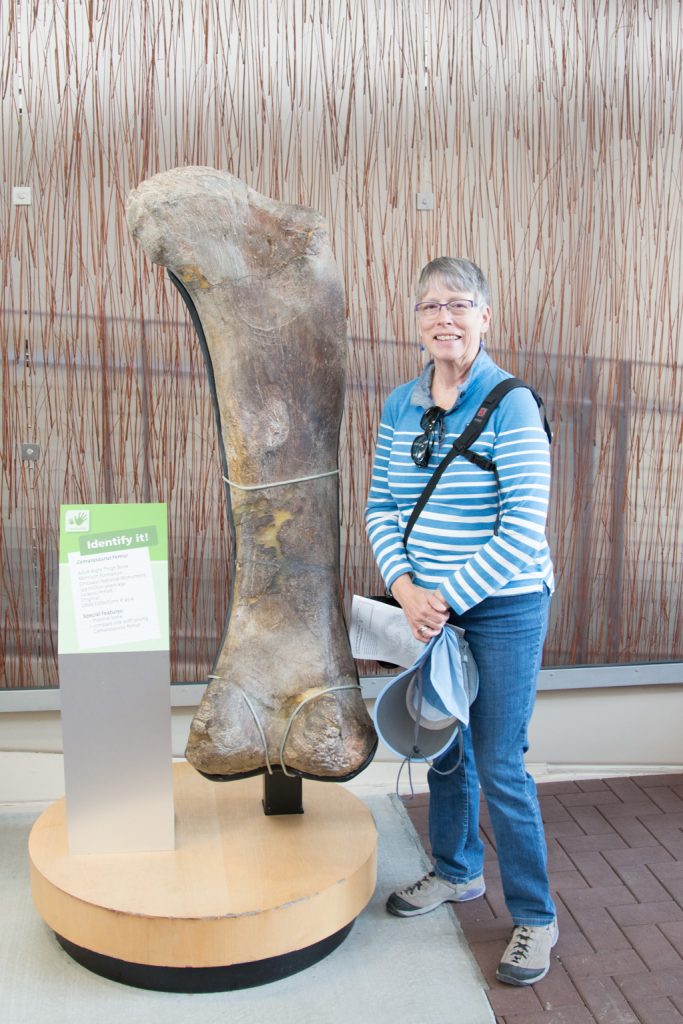
Notice that parts of that femur are dark and shiny. That is from the oil on many people’s hands. Most of the gallery is under a “don’t touch” policy, but in some places the kids (again, of all ages!) are invited to touch.
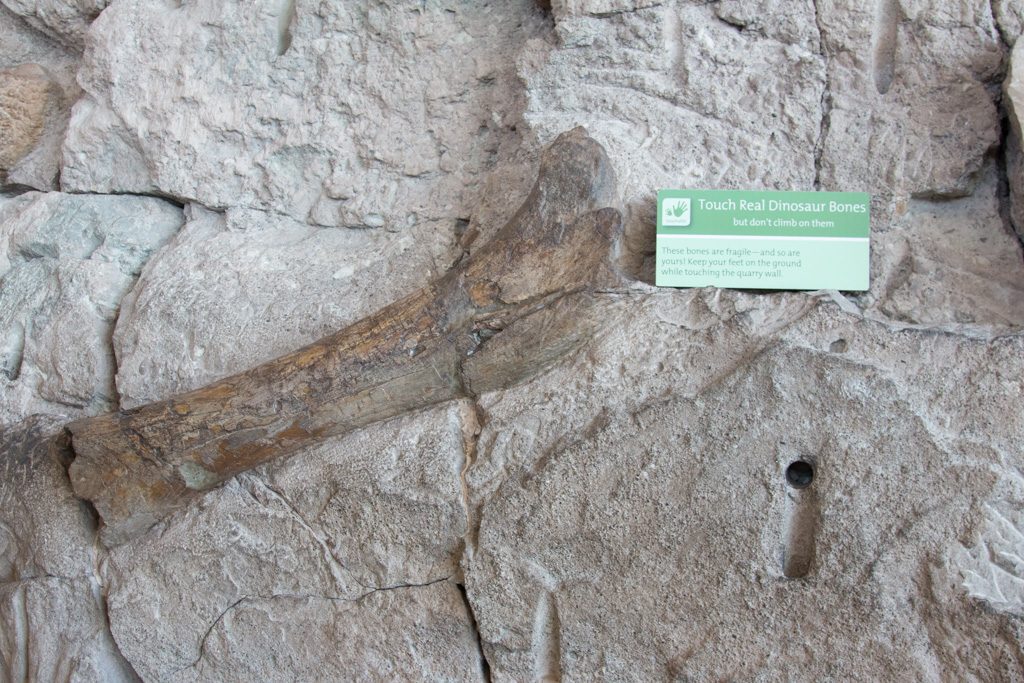
As part of the preservation efforts here, the wall is being monitored for seismic activity. There are strain gauges across many of the cracks, and there are other detectors at several places. I was not able to find a ranger who could identify what those were for.
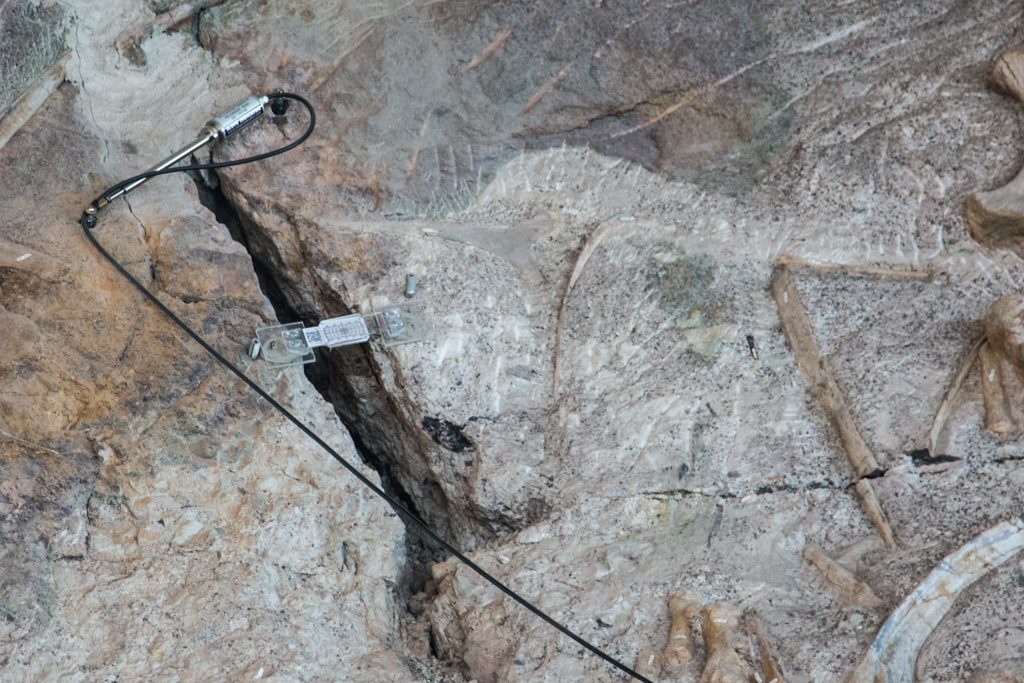
Dinosaur National Monument is big; we only dipped our toes into the water, so to speak. We did go another mile or so in to “Swelter Shelter,” to see some 1,000 year-old pictographs and petroglyphs, created by the Fremont people. I learned the difference here; the terms are not synonyms. A pictograph is created by staining the surface of the stone, usually with red ocher (ochre if you’re a Brit). A petroglyph is formed by chipping or etching the stone. Both are present at this site, but most are petroglyphs.
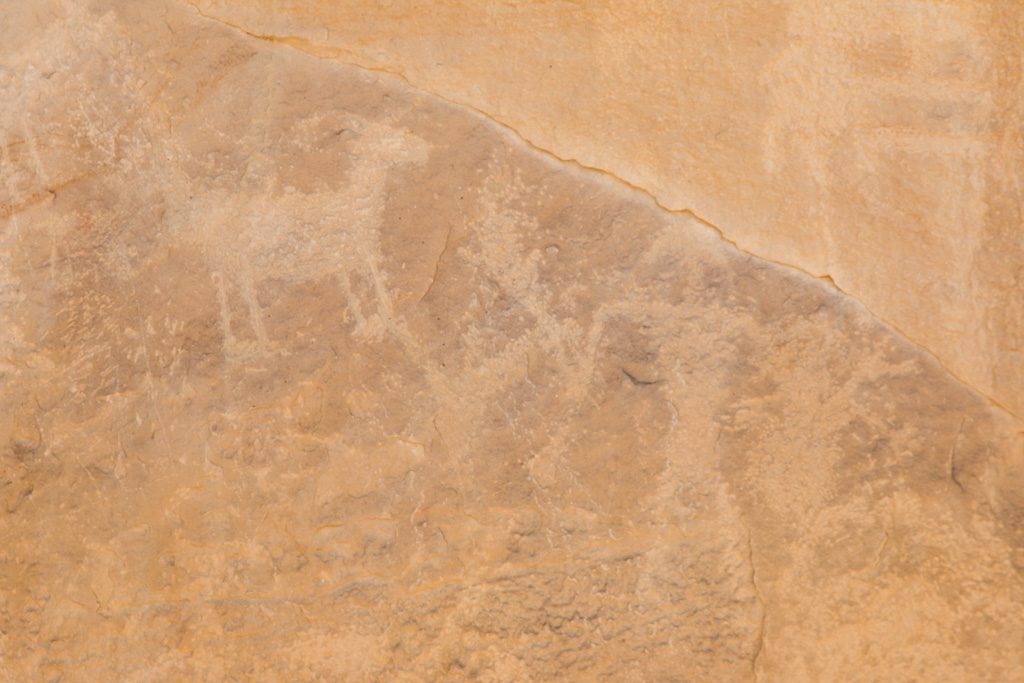
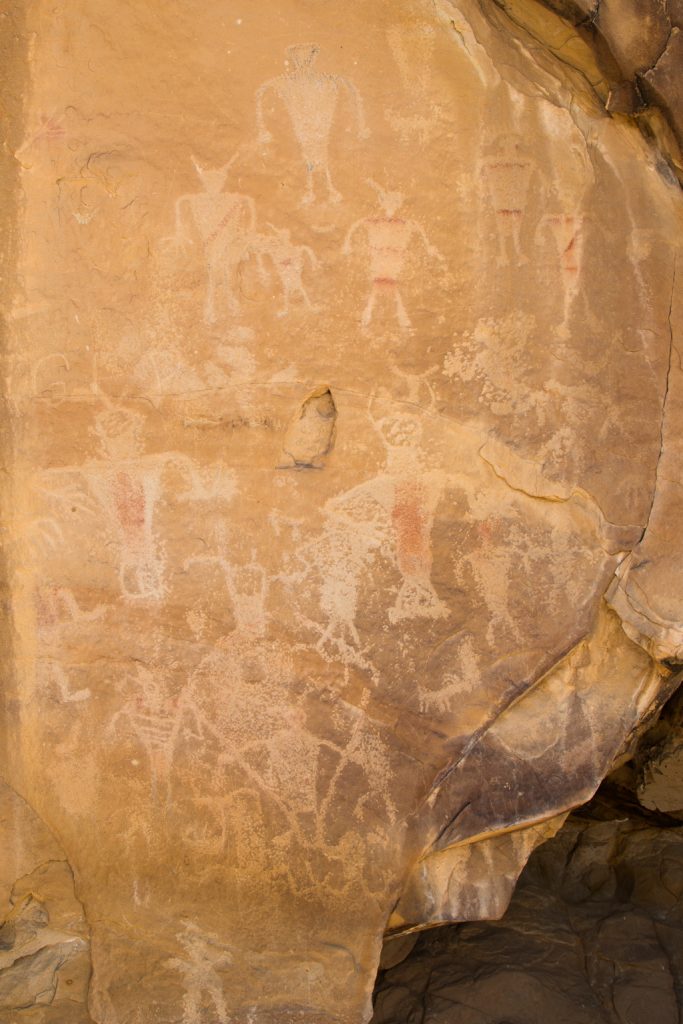
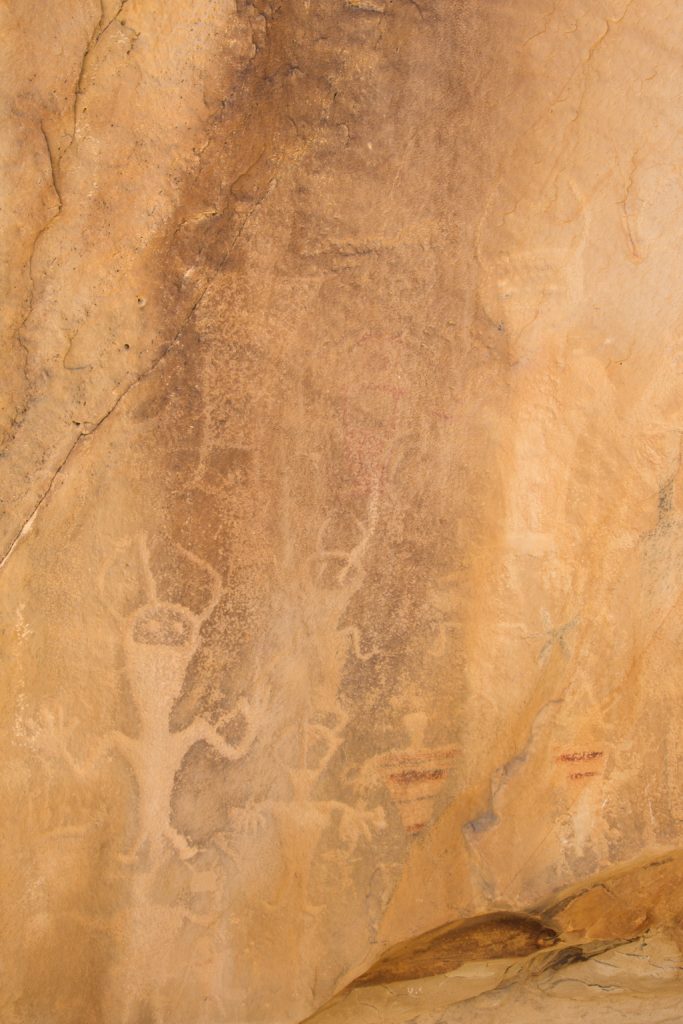
Unfortunately, there were also etchings that were less than 1,000 years old. Why do people feel the need to carve their initials into irreplaceable sites like this?
For an “in between” stop in our adventure, this one had some pretty great stuff! Our countries are so full of fascinating nature, history, and people. We keep marveling!
We are about to join with our two oldest grandkids for several weeks, so get ready for some guest bloggers!
We’ll see you again down the road.

Nice summary of Flaming Gorge.
If you are fish person float the river below the Flaming Gorge Dam. Awesome fishing and awesome scenery. Best if you use a guide – little expensive but worth the expense.
We have been to both places and have lived them. Can’t wait to take the grandchildren to Dinosaur NM!
They will be amazed!!!!